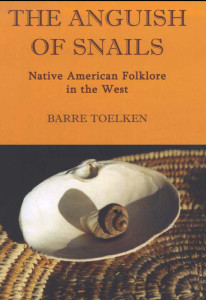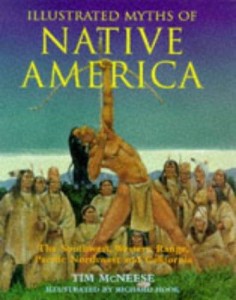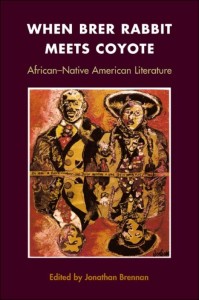Barre Toelken’s The Anguish Of Snails: Native American Folklore in the West
 Barre Toelken has spent much of the past half-century studying American Indian culture as an outsider on the inside. Adopted by a Navajo family who saved his life when he became ill while prospecting as a teenager, Toelken became a professor of English and folklore, teaching at Utah State University and the University of Oregon for four decades. I was privileged to take a course from him as an undergrad at the U of O in the mid-’70s, and so leapt at the chance to review his book.
Barre Toelken has spent much of the past half-century studying American Indian culture as an outsider on the inside. Adopted by a Navajo family who saved his life when he became ill while prospecting as a teenager, Toelken became a professor of English and folklore, teaching at Utah State University and the University of Oregon for four decades. I was privileged to take a course from him as an undergrad at the U of O in the mid-’70s, and so leapt at the chance to review his book.
In The Anguish Of Snails Toelken distills a lifetime of studying the folkways of Navajos and other Western tribes into a book that is small, but packed with information. The book reflects Toelken’s own personality and teaching style: Learned but low-key, authoritative but readable, and above all, with wit and graceful style.
Toelken at the outset refutes two notions: that American Indian culture is especially wise or magical, and that the study of folklore requires distance and objectivity. He uses the metaphor of the snail’s shell to represent Indian culture: It not only protects the snail, but also offers “an accumulated record of the ‘agonies’ experienced by snails. Thus Indians’ physical art objects, their dances, their stories and songs, their humor and their patterns of discovery are not just the pretty shell that surrounds the culture, but reveals much about their lives and histories.
The author sets out to show how folklore, that is, “the expressions of everyday life and the customs that animate the generalized values and worldview assumptions of Native Americans,” provides the best way to learn about what’s really important to people. And he focuses on those aspects of Native American folklore that are available to outsiders.
Most interesting to me was the chapter on dance, and particularly of the powwow as the venue where American Indian dance is most often practiced these days. Toelken reveals how the powwow has become a nationwide expression of “Indian-ness,” combining the traditions of many tribes into one pan-tribal exercise that helps protect their culture against the ravages of the surrounding and conquering Euro-American culture. From the layout of the powwow grounds to the order of the dances, the clothing that’s worn and the food that’s eaten, the powwow is shown to be a powerful and uniquely Indian expression of cultural values.
The Anguish of Snails is a scholarly work, but Toelken keeps jargon to a minimum, and always explains what he’s talking about when he must use a scholarly term. His writing style is relatively conversational, making this work accessible to anyone who’s interested in the subject.
If you’re looking for spiritual mumbo-jumbo, vision quests, dream-catchers and other New Age nonsense, don’t bother with The Anguish of Snails. Toelken’s book is, however, an excellent place to start for anyone who wants to learn about the rich and complex cultures of Native Americans.
(Utah State University, 2003)
Tim McNeese, editor, Illustrated Myths of Native America
 Tim McNeese’s Illustrated Myths of Native America is a big, handsome illustrated book that collects mythology and folk tales from American Indian cultural groups in eight regions, from the Northeast to California. In each section, he identifies the tribes by region with a helpful map, and gives a brief but comprehensive cultural overview of the groups and tribes that lived in each region. It includes a general look at the region’s prehistory as revealed by archaeology, record of historical contacts with European Americans, and a lot of information about how they lived: what they ate, how they built their houses, social structures and their spiritual worldview.
Tim McNeese’s Illustrated Myths of Native America is a big, handsome illustrated book that collects mythology and folk tales from American Indian cultural groups in eight regions, from the Northeast to California. In each section, he identifies the tribes by region with a helpful map, and gives a brief but comprehensive cultural overview of the groups and tribes that lived in each region. It includes a general look at the region’s prehistory as revealed by archaeology, record of historical contacts with European Americans, and a lot of information about how they lived: what they ate, how they built their houses, social structures and their spiritual worldview.
Following the introductory section, there are several stories from each cultural group. The tribe that produced each story is identified, as is the source for each tale. These stories generally were compiled from collections by early historians, anthropologists and others, from the early 19th to the early 20th century.
The background historical and cultural information in this book is more interesting and better presented than the stories themselves. The tales, uniformly written by “whites” in the style of writers of the period, perhaps reveal as much about the writers’ culture as about the Indians, or even more. And they were all collected long after contact with whites and the attendant intrusion of the alien culture and religion, in addition to being filtered through the lens of the whites with their assumptions of cultural superiority and “manifest destiny.”
The illustrations, by Richard Hook, are lavish full-color paintings, but are perhaps a bit romanticized; they seem better fitted to a collection of fantasy stories than a supposedly scholarly look at mythology. And they don’t always match the attendant text very well; in one instance, we’re told that the peoples of the Great Lakes country didn’t adorn themselves with feathers, while the accompanying illustrations all show people wearing feathers.
This book appears to have not been subjected to even rudimentary copy-editing or proofreading. It was printed in Hong Kong, and one suspects that it was never edited by a native English speaker before it went to press, or at best was spell-checked by a word processing program.
(Four Walls Eight Windows, 1998-99)
Jonathan Brennan, editor, When Brer Rabbit Meets Coyote
 When Brer Rabbit Meets Coyote is an academic work that examines the intersection of African Americans and Native Americans in literature. Its essays by 10 writers combine approaches of ethnic studies and literary criticism, with mixed results. As is usually the case in this type of anthology, there are roughtly equal amounts of true insight and unjustified leaps of logic, fresh perspectives and pointless rehash, incisive writing and academic balderdash.
When Brer Rabbit Meets Coyote is an academic work that examines the intersection of African Americans and Native Americans in literature. Its essays by 10 writers combine approaches of ethnic studies and literary criticism, with mixed results. As is usually the case in this type of anthology, there are roughtly equal amounts of true insight and unjustified leaps of logic, fresh perspectives and pointless rehash, incisive writing and academic balderdash.
Oddly, as in other academic tomes I’ve reviewed, this book starts out with a stiff dose of the latter. Editor Jonathan Brennan’s introduction is nearly 100 pages long. That’s about 95 pages too much of stodgy academic writing, full of typical linguistic inflation — “utilize” instead of “use,” for instance. And the opening essay by David Elton Gay, a study of Southeastern Rabbit Tales (think Brer Rabbit), is more of the same, but worse. Gay attempts to show that these rabbit tales probably grew out of the interaction between the story traditions of African slaves and American Indians. At least I think that’s his point. I had to keep waking myself up and starting over, only to encounter more of that delightful institutional prose, such as “the dominant paradigm” and “cultural syncretism.”
Sandra K. Baringer, in “Brer Rabbit and His Cherokee Cousins” approaches more or less the same topic in a slightly fresher manner. She draws on Henry Louis Gates Jr.’s work to compare the African American “signifyin’ monkey” and the Native American rabbit trickster. She compares and contrasts the two traditions, with lots of examples, and uses her own scholarship to either refute or affirm the assertions of previous scholars. It’s all a bit tedious unless you’re part of the argument yourself. Where one scholar sees similarities between two groups of tales, another sees vast differences, and all seem to make logical leaps of some kind in order to support their conclusions.
Things finally get really interesting in the section on captivity and slave narratives. The best piece of writing in the book is by John Sekora, who discusses the history of the two literary forms, and how they came together in well-known works such as the autobiography of Frederick Douglass. Sekora draws on a history of printing presses in the colonies, and how the shifting political and religious landscape affected these popular narratives, which became powerful propaganda tools in the Indian wars and the Civil War. Best of all, Sekora is a good writer; this piece, with a little editing, would be at home in a popular magazine. He makes colorful comments on the facts and draws conclusions that seem to flow logically from those facts. Unfortunately, Sekora died in an accident before completing his essay, in which he apparently planned to discuss the Native American and slave narratives of the 19th Century.
Benilde Montgomery also discusses the captivity narratives, using the example of one John Marrant, whose case occurred in the 1780s. It’s reasonably well written, and brings up some interesting theses, including that these narratives prefigured the “Leatherstocking” and other tales that are still in circulation today. Finally in this section, editor Brennan gives a lengthy and scholarly paper on one Okah Tubbee, a mid-19th Century performer, lecturer and memoirist who claimed African and Indian heritage. Tubbee’s tale begins as a slave narrative, turns into a Native American autobiography (written by his wife because he was illiterate), and incorporates the missionary conversion narrative as well, to appeal to all three ethnic groups.
Two essays, one by Jason Berry, Jonathan Foose and Tad Jones, the other by George Lipsitz, discuss the fascinating phenomenon of the Mardi Gras Indians — groups of African Americans in New Orleans who don fanciful Indian garb, gather in tribes and sing and dance their way through the Carnival season. Both are well-researched and presented papers that make the case for a strong Indian influence on the traditions of Mardi Gras and much of the popular music that has arisen from it, performed by the likes of Dr. John, Professor Longhair and the Neville Brothers. In a nutshell, New Orleans provided a perfect mixing ground for African-Americans both slave and free with various Native cultures from throughout the hemisphere, where there was much common ground in the beliefs in ancestral spirits and the use of masks, dancing, music and percussion as spiritual exercises. For the Africans, these Carnival enactments provide a means of ritualized rebellion, a way of enacting historical memories, and a means for the subculture to subversively insert its values into the dominant culture.
The final section deals in literary criticism, with three authors — Patricia Riley, Sharon P. Holland and Paul Pasquaretta — discussing the intersection of Indian and African American cultures in the writings of Alice Walker, Nettie Jones, Leslie Marmon Silko, Toni Morrison and Sherman Alexie. All make the point in various ways that the racist attitudes of white American culture have been imposed on both Indians and African Americans, so that they tend to have racist attitudes toward one another as well — in spite of the fact that a high percentage of people who identify themselves as African American have some Native American heritage as well.
In spite of its mixed quality of writing, this is a valuable book, and I hope it starts showing up in university ethnic studies courses soon.
(University of Illinois Press, 2003)
